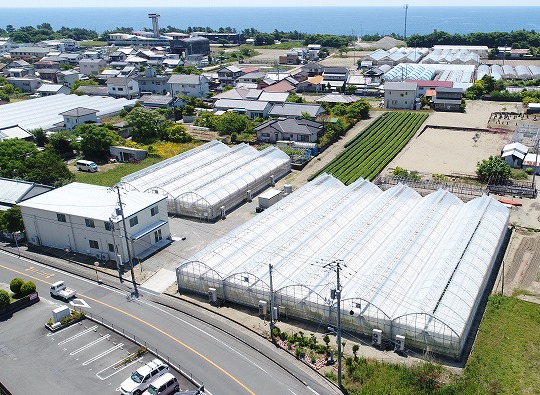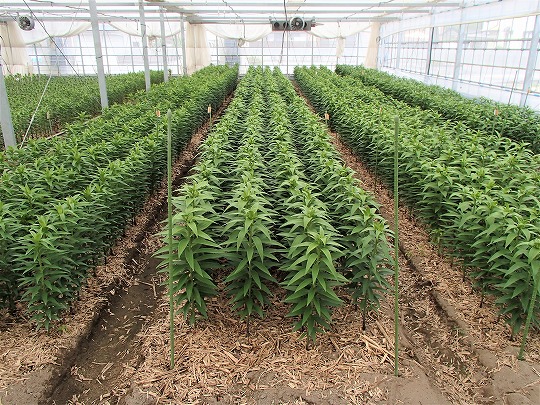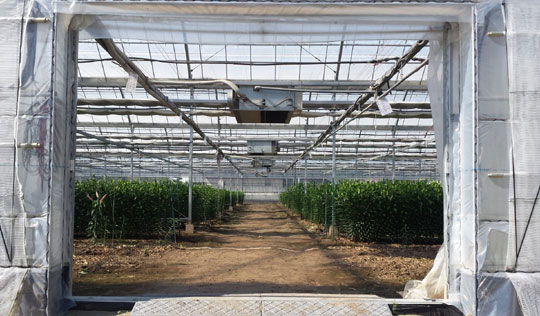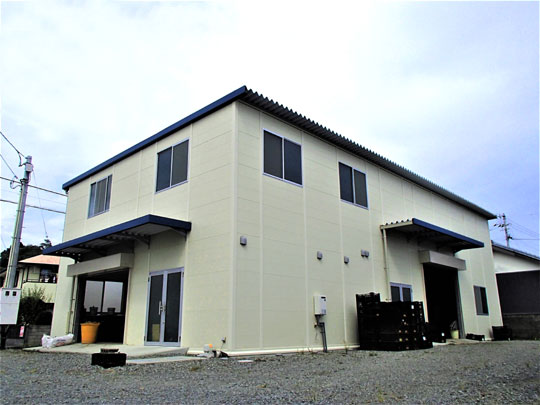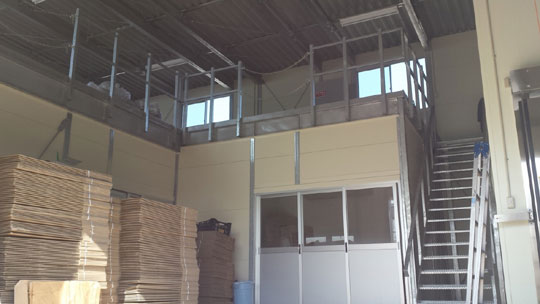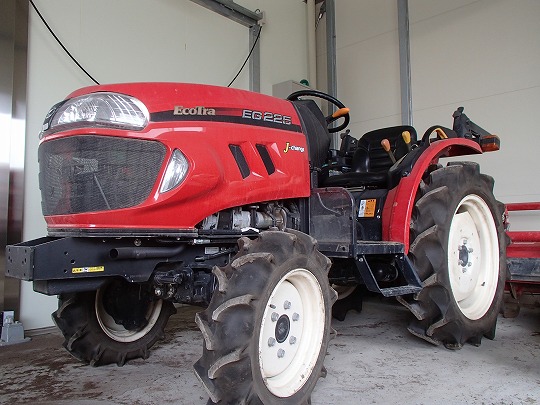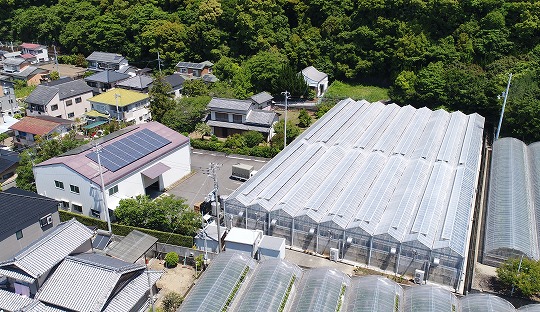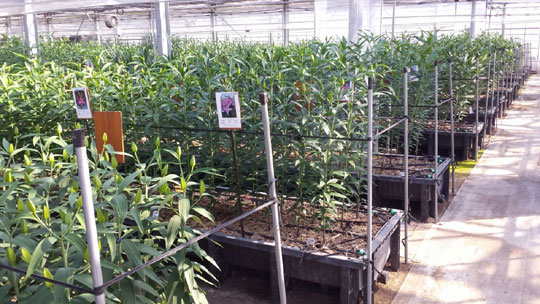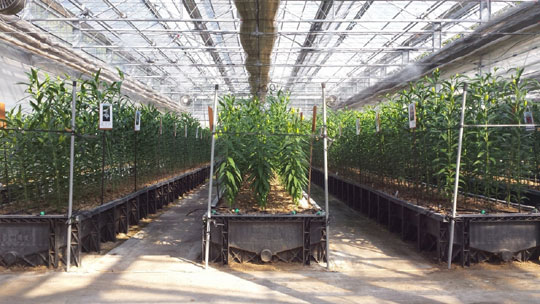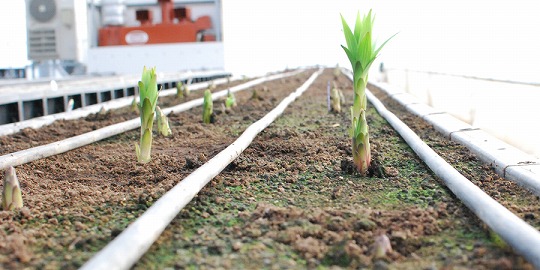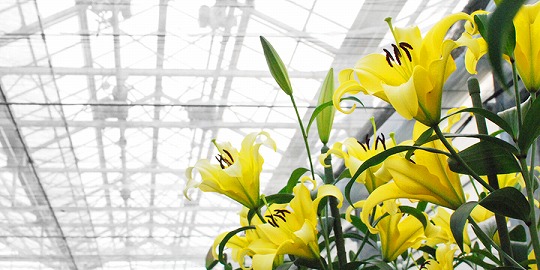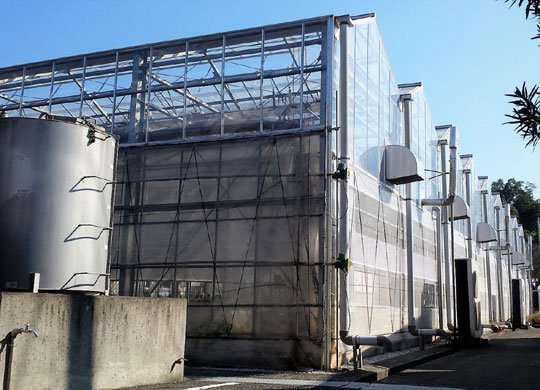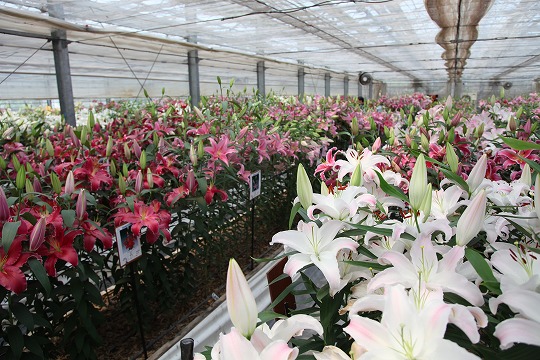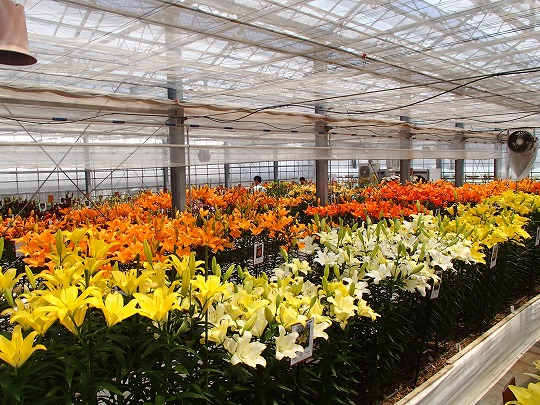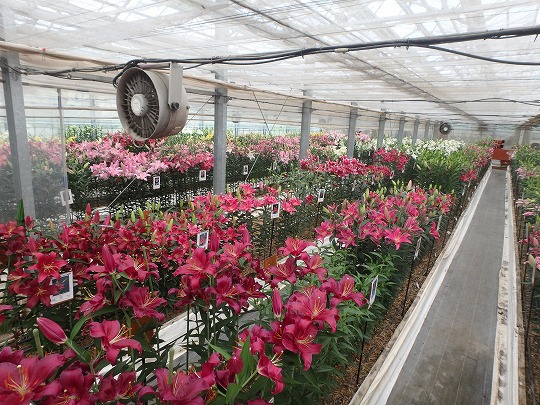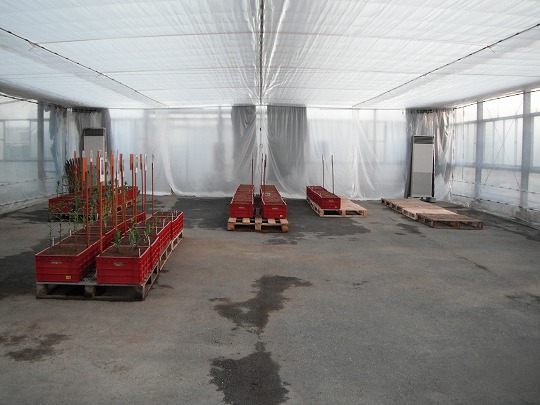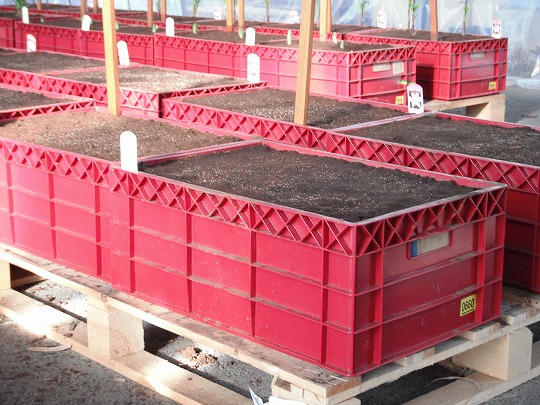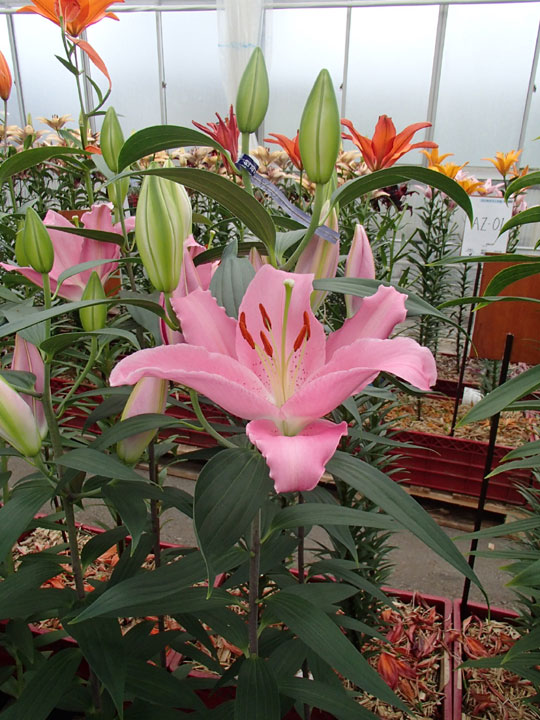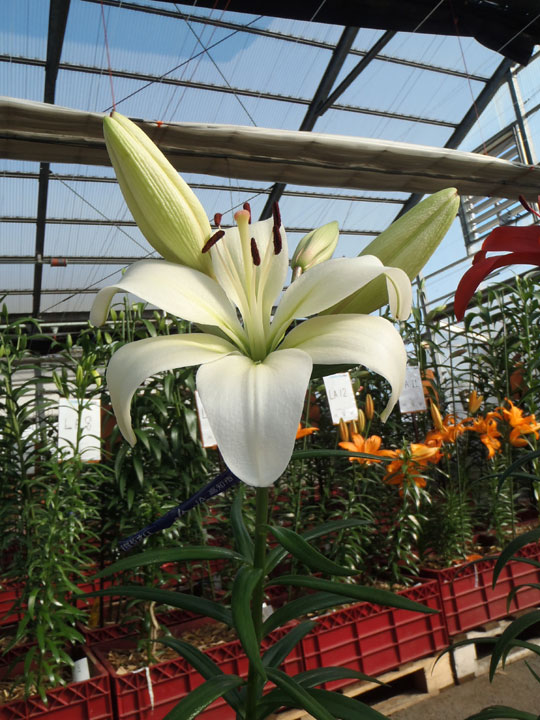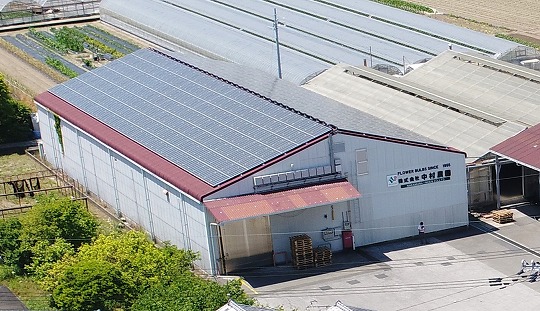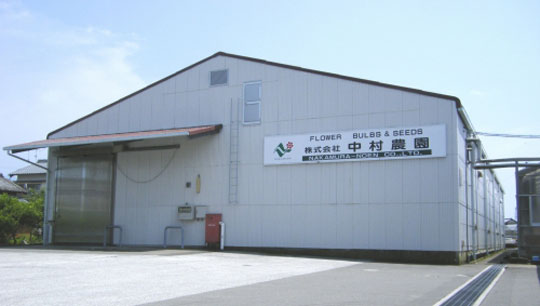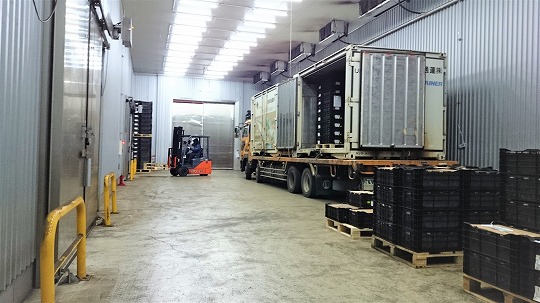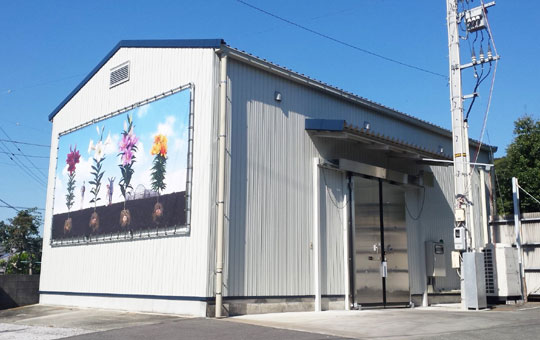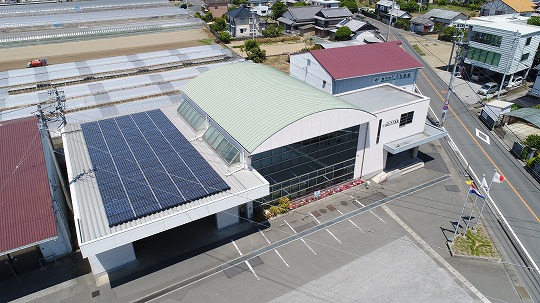Report of Business Trip to Chile
March 12th, 2018
Nakamura-Noen Co.,Ltd.
Keigo Nakamura
Thank you very much for your usual cooperation.
I visited Chile from February 25th to March 2nd, and researched the situation at all the bulb grower companies who have production for Japan this year. I would like to report it here.
- Sunny and Cool Summer
The northernmost area and the southernmost area of Chilean bulb production areas locate 500 km apart from each other, and there is a gap of 150 meters between the highest area and the lowest. If we see the areas separately, the south area around Osorno City has 75 km between south and north, and the north area around Los Angeles City has 100 km gap (and 2 degrees Celsius difference). Each production area has different climate, and they each take suitable production system and schedule for their condition.
What I heard in every place was “Spring was cool” and “Summer is cool, too”. Some areas had slight frost in October and hail in December. In summer, there was not much rain so it was dried, but there were not many days of over 30 degrees C. To see these records, it can be said that this spring and summer were cool in general. I could see that the growing stage was a little behind from usual years seeing hydrangeas still blooming along streets and lilies which were left over from disbudding were blooming, but my research on growing/swelling showed the similar results to the usual years.
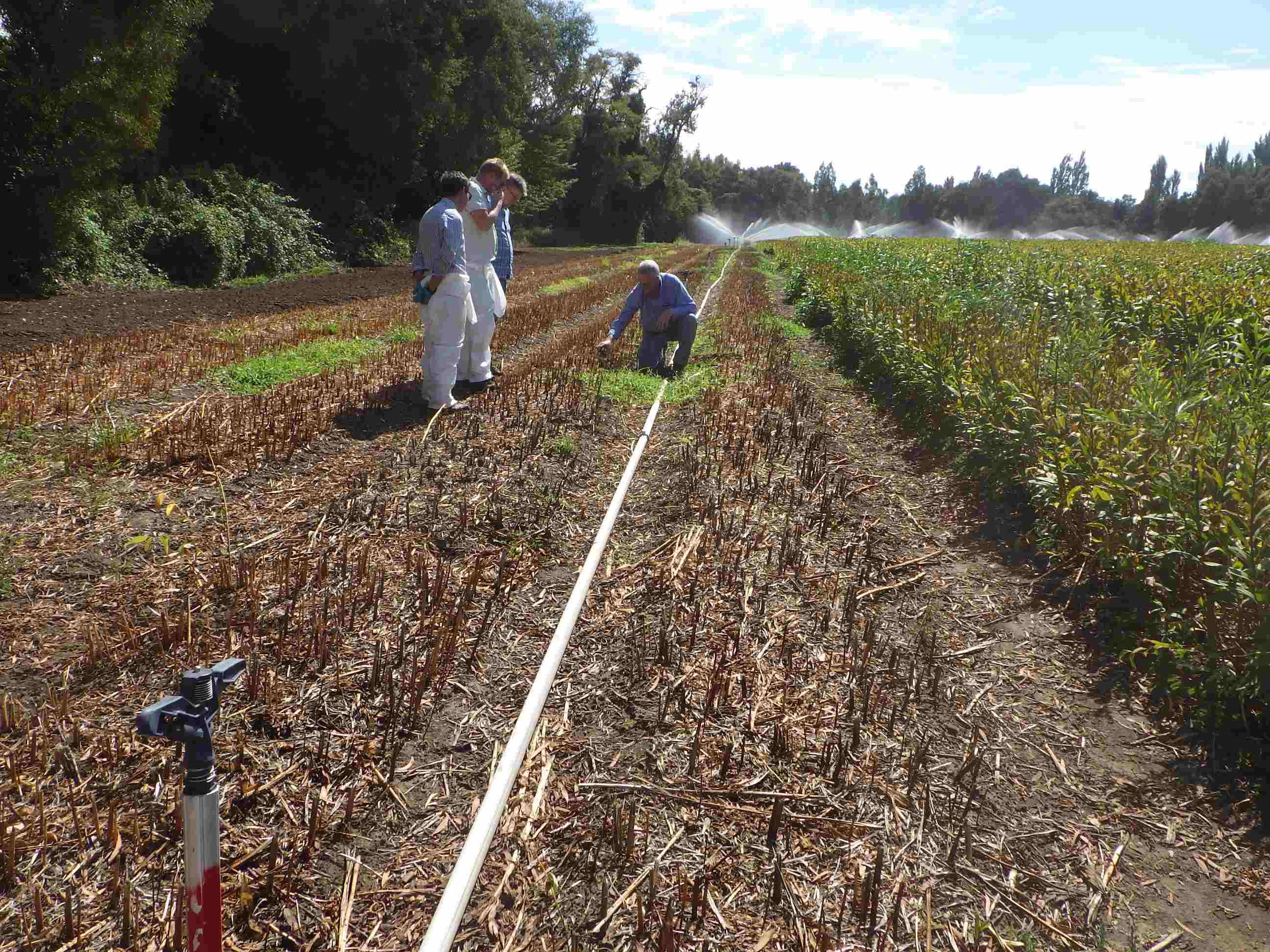 2 year-grown lot which were already cut
2 year-grown lot which were already cut
There are many things which I can know from walking, watching, digging, and measuring in fields. For example, I found that it was Purranque at the most south in which Siberia and Tabledance showed the best growing. Unlike last year, in the Purranque’s field on a hill facing north which is the sun’s direction in Chile, the soil was so soft even in the path between ridges that my feet sank when I walked on, and the lily leaves were shiny. It was a tidy field with no weeds. The growing in the first and the middle stage is very important when we think about the bulb’s power. I was surprised by the fertile land of the southern Chile and profundity of bulb production, and I thought that we need to pay more attention to the soil.

- Controlling Planting Material for Quality
Chilean growers have improved their bulb quality as we can hear from our customers in last few years. Especially, plum virus problem has been improved in last 5 years by re-production from tissue only and growing the scale lots in isolated fields. After taking such measures, production of planting material in Chile is becoming bigger.
Now Chilean growers don’t have to import planting materials from Holland unless they need to introduce new varieties. They don’t plant small bulbs soon after harvesting in Holland like 1.5 year crop. These are the characteristics of Chile production which are different from New Zealand who have taken efficiency by exchanging planting materials with Holland. Even though some worries still remain, or some Chilean growers have reduced their production acreage a lot to purify the quality, I was impressed by the growers’ positive attitude after being relieved from anxiety of quality problems.
- The Backbones Supporting Quality
It’s been 17 years since we started visiting Chile at least once a year, and the country of Chile and its economy have changed during this time. There were many gravel roads even in town before, but now the roads are often paved to the entrance of fields. In the scene of bulb production as well, the growers don’t rely on human wave tactics like before, and machines and facilities have become same as Dutch ones. During those changing period, the staffs of the grower companies also changed their style, too. Such experienced people who are working for more than 10 years are now keeping and improving Chilean production as the main power. In a difficult condition of Chile – different annual climate and weather in harvest season every year – they have been challenging everything they can do to make it better, not finding reasons why they can’t. In this visit, I talked with many of them and I often felt their long experiences from their talking. A person said, “The next spring will be my 15th spring since I moved in to Los Angeles.”, or others said, “I now do disinfection as twice as before because the temperature in summer became higher compared to before.”, “Our field is in the same place as 10 years ago.”, or “It’s my first time to see you, but I actually have been in charge of this field for 12 years.” One time I met a young new staff, and later I found that he was a son of another older staff in a different area. From these meetings, I learnt that the experience in technique is not only thing which is important for managing fields, but also the staffs’ living in their places for a long time and seeing the condition as the local people are also important.
On the other hand, a new bulb grower company is going to be established in Chile by a group which mainly consists of Dutch cut flower forcers this year. Thanks to the people’s kind arrangement, I could see their fields earlier than anyone else. I guess it will be a challenging year for them of new country, a hard climate like Kochi, soil, people, and facilities. I hope that their action will bring a new wave to the history of bulb production in the southern hemisphere.

- Crop 2018 SH
Negotiation of crop 2018SH between bulb growers and some exporters is going behind because it is difficult to expect the world’s demand after 3 years of bad luck for cut lily business in Chinese New Year’s Day.
While the quantity of SH bulbs imported in Japan is decreasing due to LA’s reduced production and other factors, our sales quantity is increasing little by little every year. We will be able to inform you the prices of our sales varieties of crop 2018SH soon. Thanks to your continuous support, we have a big advantage in pricing coming from economies of scale. We hope to become a platform for Japan’s cut lily production.
Pressure of raising domestic handling cost such as import / transport fees and storage fees is rather serious. I heard that the bulb prices differed by 2 digits between companies who took different sales channels in crop 2017SH business. In addition, shipping brokerage fees and storage fees are what we need to pay every time, so these are also big things. In such situation, having own cooling warehouses specially designed for flower bulbs like ours is very convenient in the points of cost and quality management, and also accessibility.
There is a trend in bulb grower companies in the southern hemisphere that they are limiting the numbers of export companies they work with. I imagine that they want to reduce the costs and risks when they work with many exporters even though the destinations are same countries, and to improve efficiency of operation and facility management. Meanwhile, for export companies’ side, they watch the future of Japan’s market more carefully, and they are judging the importers in points of facilities such as warehouses and test greenhouses, and also their services such as sales, promotion, and foresight.
The three groups of “Bulb Production”, “Export/Import”, and “Cut Flower Production” need to have medium-to long-term cooperation to enable the lily industry to fight against other flowers. Japan is not a country which is becoming bigger rapidly like other Asian countries, but we have a characteristic of stable growth. I believe that we have good relationships with New Zealand and Chile by visiting these countries for nearly 20 years every year as one of a few Japanese import companies specialized in lily.



